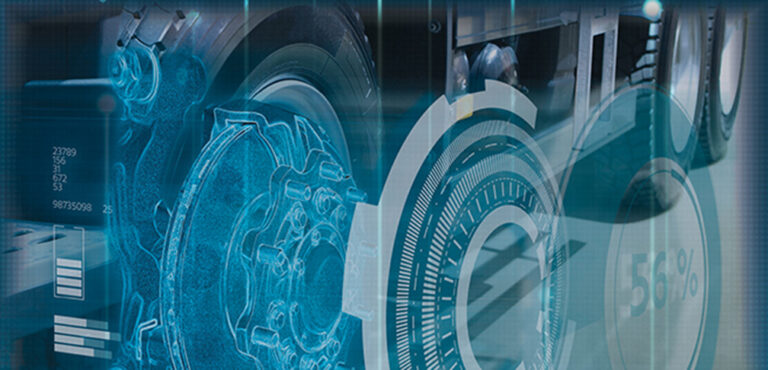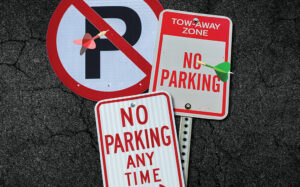Proponents of wireless roadside inspections (WRI) argue that the process will save drivers and companies time and dollars by transmitting real-time data to federal and state regulators without requiring vehicles to stop.
However, despite its potential upswing — and more than a decade of studies in the U.S. — WRIs have yet to be put into widespread use.
WRI is envisioned as “a system of systems,” both public and private, for the collection, capture, and assessment of significant quantities of information about carriers, drivers, and equipment.
But if put in place, how will WRIs impact the industry itself, particularly when it comes to saving both money and time on the road?
PrePass Vice President of Field Operations Steve Vaughn said it all depends on how the program is implemented. PrePass is a nonprofit corporation focused on commercial transportation safety.
“A fleet (could) save money and time by utilizing a bypass system,” he stated. “The bottom line will be the carriers and the states.”
Vaughn added, depending on how WRI is rolled out, the equipment needed to transfer information will likely become part of the vehicle as it is manufactured, retrofitted, or accessed using other technologies.
“In trucking, time is money,” said Drivewyze Product Manager and Director of Compliance Sara Steele. “There will be direct savings through increased efficiency and productivity. There will also be savings from consuming less fuel, because drivers will idle less during the shortened inspection time, which has both monetary and environmental impacts.”
Drivewyze, like PrePass, is an intelligent transportation service. It is known for its Drivewyze PreClear weigh-station bypass service, and is in the pilot stage of a program that will allow WRIs.
Steele also said that automation improves accuracy.
“Improved accuracy means less time spent investigating inspection report errors and handling DataQs, which means administrative time saved in addition to driver time already saved,” she explained. “Increased driver satisfaction, fuel and emissions savings, and improved accuracy are a just few of the indirect benefits of expedited inspections.”
So, if WRI is adopted, what impact will it have on the drivers?
“The biggest burden on the drivers will be on keeping their electronic logging device (ELD) information up to date and accurate,” predicted Vaughn. “Although it is required today, most are never inspected or checked by enforcement.”
He said if the information is electronically transmitted as a vehicle approaches the inspection or weigh station, it will be identified as not being current and the driver and carrier could be penalized.
“For the carriers and owner-operators, the challenge will be with more of their trucks being identified as having a driver or vehicle violation,” he noted. “Those trucks will most likely be looked at first for inspection, which could result in more violations and out-of-service notations, and that could impact their CSA/ISS scores.
“Right now, roughly 25% of trucks inspected have an out-of-service violation, but only a small percentage of commercial vehicles are inspected,” he continued. “Imagine if WRI were applied to all trucks and the same rate of OOS violations occurs. That would mean 25% of the trucks on the highway would be out of service at any given time. What would be the impact on fleets and the supply chain then?”
Steele added that for drivers — both company and owner-operator — driving equals earning.
“Expedited inspections save tremendous time during inspections, getting drivers back on the road more quickly,” she said. “With roughly 3.5 million inspections done in a year and about 6 million commercial trucks on the road which pass through weigh stations, those numbers indicate that a good amount of time may have passed since the last time a driver went through an inspection.”
According to Steele, inspections are stressful, and asking any driver to recall under pressure a task they might not have done in many months invites problems.
“Through automation, expedited inspections ease the stress of transferring their hours-of-service logs from their ELD, saving time and eliminating the opportunity for related violations,” she said.
“What we are doing has nothing to do with the old wireless roadside inspection, which many remember from 15 years ago,” she continued. “That was a mothballed government project using transponder technology.”
Steele explained that Drivewyze uses modern cellular GPS technology that is already in use by millions of trucks across North America as the company’s pilot is tested.
“Drivewyze is subsidizing the cost during the initial rollout,” she said. “Down the road, the service will be subscription-based, similar to how carriers currently pay for Drivewyze PreClear weigh-station bypass.”
She noted that this will not be a government-subsidized service, adding that in 2017, the FMCSA ruled it would not use taxpayer dollars to build new systems that are currently being provided by the private sector. This includes automated roadside inspections.
“In my opinion, the restrictions on government and a lack of commitment is the problem,” shared Vaughn.
“Ultimately, those answers should come from a collaborative effort between the trucking industry and enforcement,” he continued. “To have a successful approach, the solution needs to incorporate benefits and protections to both groups, with improved safety and efficiency on America’s highways always the goal.”
Will the next step forward be tied to the infrastructure bill that was passed last year?
“It’s possible, but commercial vehicle enforcement is generally the last to receive funding in many state DOTs and enforcement agencies,” said Vaughn. “We are well aware of the highway and bridge issues around the country, and I imagine those projects will be the focus for spending.”
Steele said Drivewyze is shouldering the cost of developing the new WRI technology, and that it will be provided to states at no cost.
“As Drivewyze is developing this technology privately, though in partnership with FMCSA, CVSA, and state enforcement agencies, there is no dependence on, or tie to, the infrastructure bill that was passed last year,” she said.
Joseph Price has been a journalist for almost two decades. He began in community media in 2005 and has since worked at media outlets in Virginia and Arkansas. He is also a commercial drone pilot and video editor. He hosts a weekly community radio show focused on goth, metal and industrial music that airs Wednesday evenings at 6 p.m. at www.kuhsradio.org.














